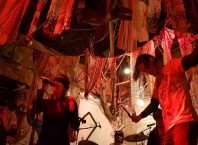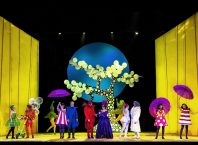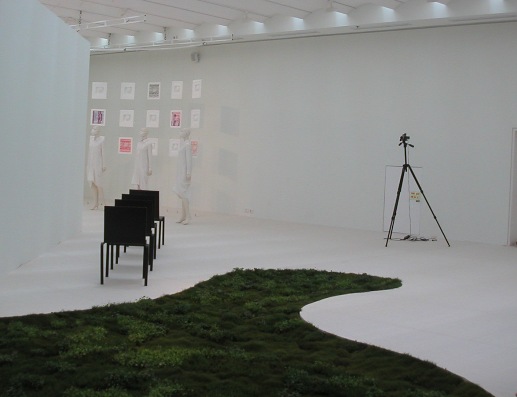
Tokyo Fiber SENSEWARE is a futuristic playground for the senses. This intriguing new exhibit opened today at the Design Museum Holon, and will be on view through September 4. Don’t be misled by the word “fiber” – if you think this is a fashion exhibit think again! An imaginative tour of the possibilities inherent in synthetic fibers, Exhibition Director Kenya Hara invited designers from diverse fields to create with the fibers as a way of conveying their potential.
Designer Hara, founder of the Nippon Design Center’s Hara Design Institute, art director of MUJI, and author of “Designing Design” (Verlag 2007), supervised the installation of the exhibit in Holon. Representatives of the different design teams came to Israel to set up their individual exhibits, working in socks on the immaculate white floor. While they meticulously put the finishing touches on the exhibit, Hara accompanied a press tour for a preview.
Addressing the group, Hara explained that the exhibit is one that relates to the future, consisting of objects that have not yet been manufactured. Hara’s concept of “senseware” refers to those objects whose sensual properties trigger the imagination, inspiring new designs and uses. The current exhibit focuses on synthetic fibers, not as a replacement for natural fibers, but as an independent design medium, to be explored and utilized in ways that have not yet been invented.
Hara worked with designers from architecture, interior design, product design, high-tech, the auto industry, a flower artist and other fields to expand the idea of what can be made from fiber. “Fabric,” says Hara, “is not necessarily something soft and pliable, it can also be rigid. We are not trying to create things that are against nature; on the contrary, advanced technology is friendly to the environment. The Japanese philosophy is to combine nature and technology – the more we progress we will succeed in developing artificial materials that are also environmentally friendly.”
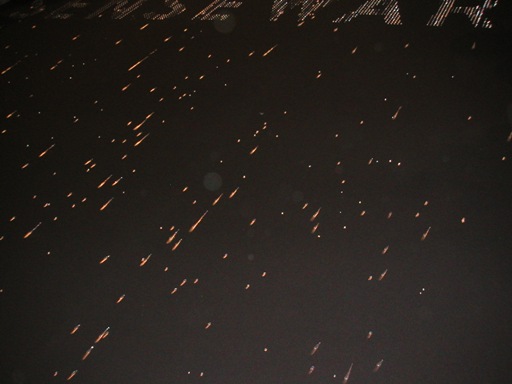
Yet what is immediately striking about the exhibit is its beauty. In the entrance to the exhibit is a large tilted rectangle covered in ultra water repellent black fabric, which Hara compares to a lotus leaf. Designed by The Hara Design Institute, Nippon Design Center, and Atelier OMOYA, the exhibit logo “SENSEWARE” is created from water drops that bead up to the surface from nozzles within the box. The shimmering beads grow in mass until the pull of gravity draws them down the tilted surface, shattering the image. The letters shimmer under the lights, break up and re-create themselves in this mesmerizing cycle.
Hara demonstrated the pliancy of Moshi-moshi, a sofa with gently-rising supports designed by Antonio Citterio utilizes a multi-layer stretch fabric that can accommodate the change in its shape when the supports are activated.
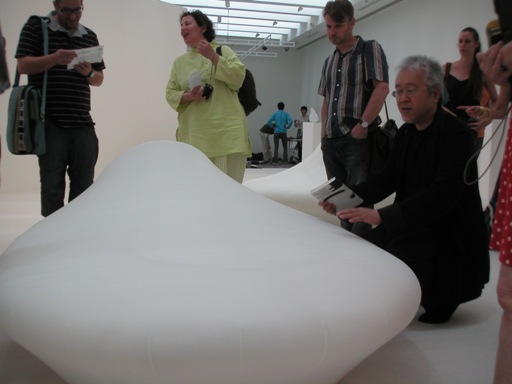
Whimsy is not neglected in this elegant exhibit: the Smiling Vehicle, designed by the Hara Design Institute, NDC and Nissan Motor Company, LTD., Design Center. Covered in stretch fabric, the smile suggests to Hara the possibility for more cordial encounters between drivers.
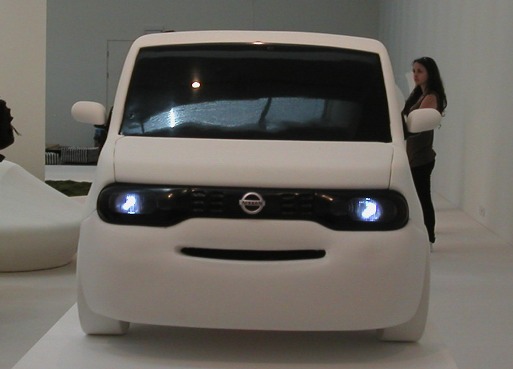
The mask designed by mintdesigns, is made of moldable non-woven fiber to protect the wearer from pollen. The mask not only molds itself to the face for comfort and protection, but is humorously designed for that futuristic primate look!
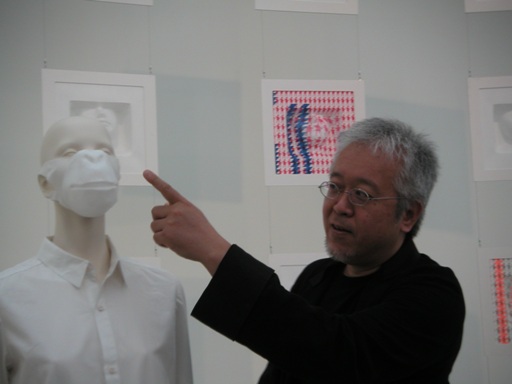
The carbon fiber chair designed by architect Shigeru Ban is both strong and super light weight – and very appealing! This one had Midnight East wondering what the price tag might be…
Carbon fiber stars once more in the lighting fixture designed by architect Jun Aoki. The appropriately named “Thin Beam”. The long cantilever beam stretches into space, the qualities of the carbon fiber creating a delicate line of light that can illuminate an entire area. Museum Director of Education Amnon Silber accompanied the group, enthusiastically keeping up with the barrage of questions. Explaining that the fusing of the carbon fibers with resin creates a material that cannot be stretched, and therefore remains straight, he said, ““This actually defies gravity. In the future we will be able to build buildings out of such materials.”
Poetry and environmentally friendly design meet in Flower Artist Makoto Azuma’s carpet of green moss planted on a layer of biodegradable fiber. Using “Terramac” © (Unitika Ltd.), a three dimensional textile created from carbon material captured from the air by plants through photosynthesis, which returns to the soil. The layer of fiber traps water, enabling the plants to send their roots deep into the soil, creating a green interior space.
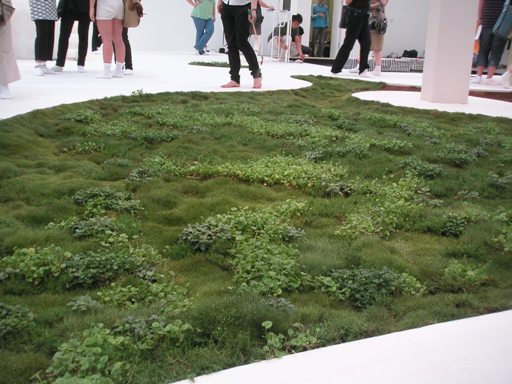
Each display in the exhibit will be accompanied by a complete description of the materials used and a sample of the fiber that can be touched.
The museum has extended summer hours, and will be open until 10pm on Tuesdays and Thursdays, with activities for families with children aged 8 and up on Tuesdays evenings (advance registration required).
Design Museum Holon, 8 Pinhas Eylon Street, Holon.
Open Daily except Sunday. Entrance is 35 NIS, information and tickets: 072-2151500.
AYELET DEKEL

